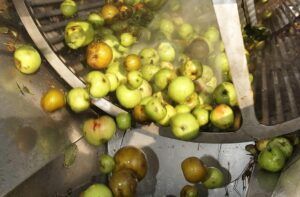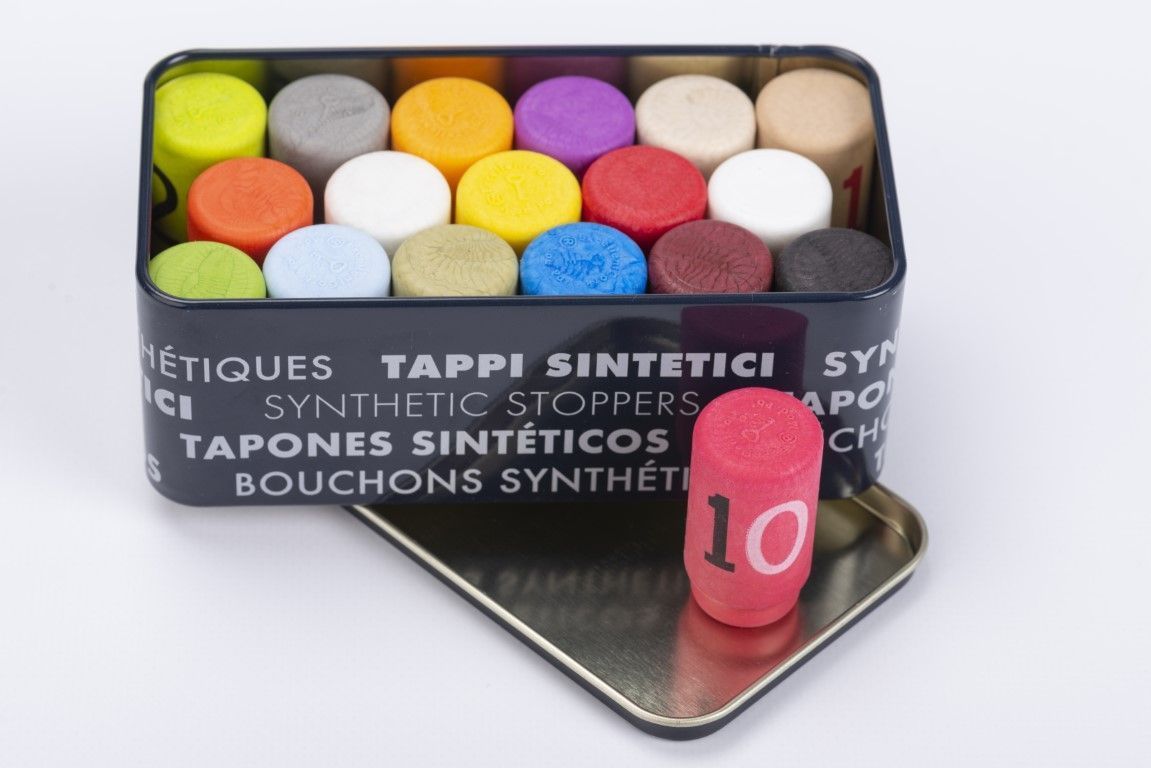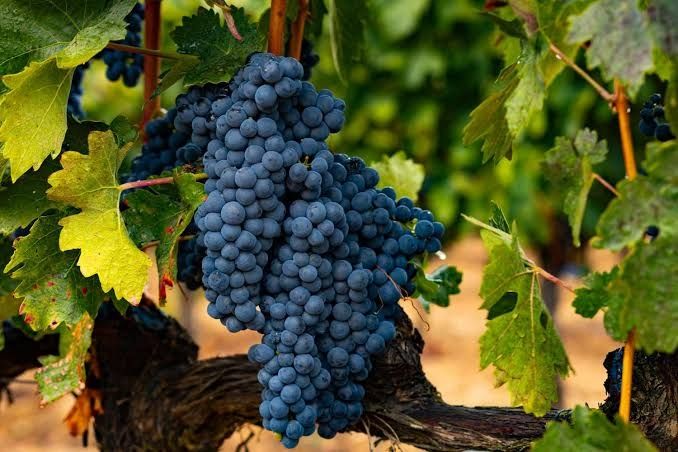There are many beverages that, thanks to their freshness and delicious flavor, are perfect for spending time with family and friends or enjoying a summer afternoon. Among them is cider, a drink recognized for its exquisite taste, made from the fermentation of apple juice.
From Excellent Cork, as experts in manufacturing synthetic corks for various types of beverages, we bring you this article where we explain the origin of cider, its characteristics, and the production process. Let’s get started!
The history of cider around the world
Cider is an alcoholic beverage made from the fermentation of apple juice. Although it is primarily recognized in Europe, its history can be traced to other parts of the world.
The origin of cider dates back thousands of years in various cultures. It is believed to have originated with ancient civilizations of the Near East, where apples were cultivated and fermentation was experimented with. Similarly, Greek and Roman cultures had a similar beverage.
Over time, as the Roman Empire expanded, cider gained greater recognition across Europe, with Gaul, now modern-day France, becoming a major center for its production. Additionally, during the Roman occupation, cider reached the British Isles.
The origin of cider in Spain
The origin of cider in Spain dates back to ancient times, when the northern regions provided ideal climates for apple cultivation.
Although studies do not provide exact dates for its origin, records from the Middle Ages show that cider was already a popular beverage in the Iberian Peninsula.
The consumption of cider grew exponentially and was strongly influenced by traditions. During the Reconquista, cider became deeply rooted in northern Spain, where it became an important economic resource and a key part of the culture, especially in Asturias and the Basque Country.
The origin of Asturian cider
The origin of Asturian cider is well-known and significant, as this beverage is one of the most recognized in Spain and is closely tied to the culture and traditions of Asturias.
Some studies suggest that cider has been present in this region since pre-Roman times. Research even traces its consumption back to the 8th century, when it was already a famous and widely consumed drink.
But why is Asturian cider so famous? This is due to its native apples, which provide a distinctive and appealing flavor. Its production process is highly traditional, utilizing techniques passed down through generations.
Today, Asturian cider is recognized nationally and internationally for its flavor and production process, forming a vital part of the region’s culture.
Denominations of origin for cider
The denominations of origin for cider are recognitions awarded to various regions to certify and guarantee the quality and production of this beverage, ensuring traditional methods and the use of native apples.
Among the best ciders in Spain, the following stand out:
- Euskal Sagardoa (D.O.P. Basque Country Cider): The Basque cider denomination of origin was established in 2016 and ensures that cider produced in the Basque Country, in the provinces of Gipuzkoa, Bizkaia, and Álava, adheres to traditional methods and uses 100% local apples. The cider from this area is dry with a pronounced acidity.
- Asturian Cider (D.O.P. Cider of Asturias): This is the most recognized denomination in Spain and certifies several categories produced in Asturias, such as traditional natural cider, sparkling natural cider, and new expression cider. For these, the apples must be native, from regions like Raxao, Regona, Perico, and Xuanina.
- French Basque Country Cider (A.O.C. Cidre du Pays Basque): This denomination protects cider from the regions of Labourd, Lower Navarre, and Soule, promoting production through traditional methods and using local apples like Anisa and Ondoburu.
These denominations are essential for ensuring the high quality of cider and for promoting safe production practices that uphold cultural ideals.
The cider production process

Cider Production Process
The cider production process involves a combination of techniques and traditions that, through the fermentation of apple juice, results in a delightful alcoholic beverage perfect for refreshing moments of fun and relaxation.
Here are the main production steps:
- Harvesting the apples: The first step is collecting apples. They are carefully selected following established regulations, considering the type of cider to be produced. Blending different varieties is common to achieve balanced flavors.
- Washing and pressing: Once harvested, the apples are thoroughly cleaned. They are then ground, and their juice, known as must, is extracted through pressing, ensuring that bitter flavors from seeds are avoided.
- Fermentation: The must is transferred to tanks where fermentation begins. In this process, natural or added yeasts convert sugars into alcohol and carbon dioxide. This stage can last several weeks or months, and the liquid is often transferred between tanks to avoid sediment at the bottom.
- Maturation: After fermentation, the cider enters a maturation stage that can last months or even a year. During this time, the cider remains in tanks or barrels, allowing its flavors to fully develop.
- Filtering and bottling: When maturation is complete, the cider undergoes a filtration process to remove impurities or sediment. It is then carefully bottled. In some cases, pasteurization is performed before bottling to stabilize the product.
In some regions, like Asturias, an additional step, called “escanciado,” is performed to enhance the flavor and aroma of the cider during serving. Doesn’t it sound delicious? Give it a try! Discover all the secrets of the cider pouring stopper.
Frequently asked questions about the origin of cider
Still have questions about the topic? Don’t worry. Here we answer some common doubts about cider. Let’s continue!
What is the difference between natural cider and sparkling cider?
There are some differences between natural cider and sparkling cider that make each one special. Here are the main distinctions:
- Natural cider undergoes fermentation in barrels and is bottled without filtration or pasteurization. Sparkling cider, on the other hand, is carefully crafted and may go through two fermentation processes.
- Regarding carbonation, natural cider does not have intentional bubbles; these appear naturally during fermentation. Sparkling cider has visible bubbles added through a natural or artificial carbonation process.
- The flavor of natural cider is more acidic due to its maturation and fermentation process. In contrast, sparkling cider has a sweeter, smoother, and more refreshing taste.
Where is the best cider in Spain produced?
The quality and flavor of cider can vary based on personal preferences and regional characteristics. However, some regions are renowned for producing high-quality and distinctive-tasting cider. These include:
- Basque Country: The native apples and techniques used make cider from this area famous.
- Asturias: The natural cider from Asturias is recognized for its acidity, thanks to the use of native apples and traditional methods. It also features a popular pouring method.
- Navarre: The cider produced in Navarre is known for its unique flavor and high quality, using local apples that add distinctive traits.
What makes a cider high-quality?
Poor-quality cider can result from improper production processes. To avoid this, it’s important to identify some factors that ensure high quality and exquisite taste. These include:
- Fresh ingredients with a balanced sweetness and acidity.
- Proper traditional production methods.
- Adequate fermentation and maturation times to fully develop the cider’s flavors.
- Correct cleaning and filtering processes to ensure a clear cider free of unwanted sediment.
- A well-balanced flavor profile where acidity, sweetness, and other notes are perfectly aligned.
- Compliance with manufacturing standards.
At Excellent Cork, we know that the quality and flavor of cider and other beverages depend on proper bottling; therefore, we manufacture high-quality corks to provide convenience, safety, and variety. Feel free to contact us and explore our online catalog. We’re here to help!





